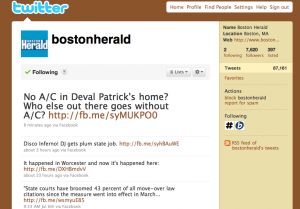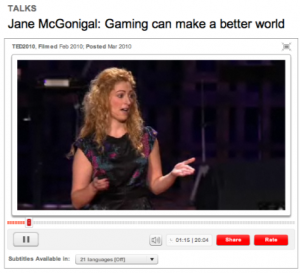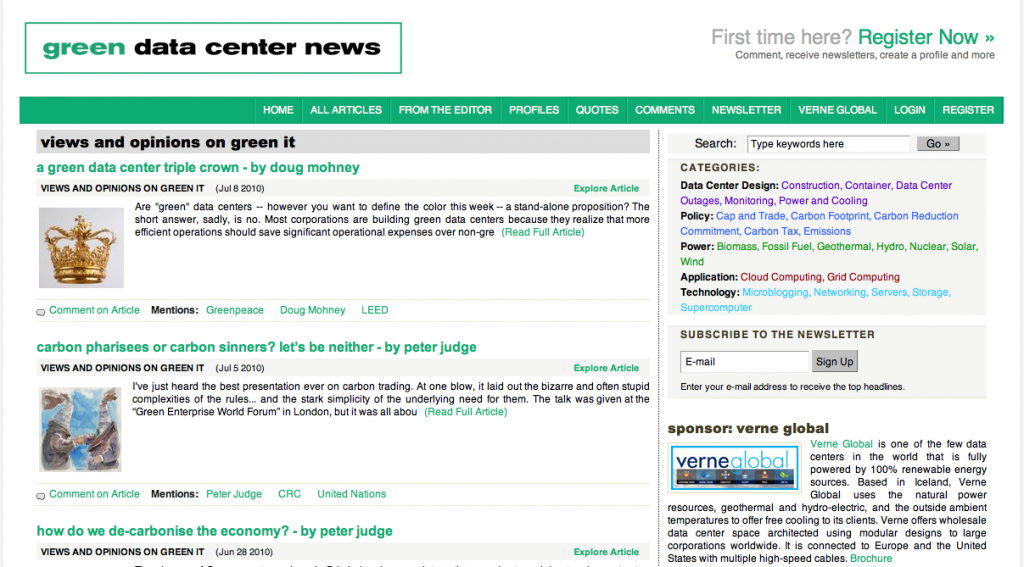The traditional media may be on life support, but it’s not dead – and it’s not going to die. That was the message of Steve Safran’s talk at the recent Social Media Day in Boston, and as a former journalist, I agree with that faintest of faint praises.
But some newspapers seem to be struggling with new social media tools.Take the Boston Herald’s Twitter page, for example. Here’s a major metropolitan area’s feisty, scrappy tabloid, and its Twitter page looks like an after thought. Because it is.

This sends a signal, and it’s not a good one: We don’t care about this, we don’t care about our product. That’s what’s called in the marketing world as “not good.”
Their competitor, the Boston Globe, has a Twitter presence under their Boston.com brand – see it here. The Globe has more than 16,000 followers, the Herald only has a little over 7,000. In other words, they’re getting creamed by the competition.
Here’s how to fix it.
1. Lose that standard background
That’s just an option picked from a set up menu. You can upload any background image you want. With access to award-winning photographers right there, in the building, why not use their work? Ask them to select something – they’ll jump at it. Better yet, design a custom background with subscription info. Here’s an article on how to do that.
2. What is with that grainy icon?
You can’t even see the word “Boston” clearly. This is your company’s image and its reduced to a smeared blob. Not the message you want to be sending.
3. Unhook it from Facebook.
All the Twitter links go back to Facebook … which link back to the Herald . Eliminate the middle man – link directly to your news pages (like the Globe does).
4. Make your tweets the headlines of your stories.
The Boston Herald writes great (and I mean GREAT) headlines. That’s all you need, trust me. Currently the paper is putting out tweets like this:
You read that right!: http://fb.me/Cf85z7P3
If I’m looking at a stream of Twitter messages, there is no way I know what that means. But here’s the headline of that story in the link:
Feds ordered to write $19M check to mobster
Guess which one is going to make me click?
5. Repeat your tweets as if you were CNN.
This isn’t my idea; it’s Guy Kawasaki’s idea, the founder of Alltop (a news aggregator site). Guy says repeating tweets at regular intervals – just like CNN Headline News – results in more hits to links than just “tweeting” it once. The current half-life of a post on Twitter is estimated to be less than three minutes. After 3 minutes … it’s dead and won’t get any more traffic. So be like CNN and rotate the top news items on a regular schedule.
6. Empower your editors to use Twitter.
If you think this is crazy – look at what your competition does. They have editors with their own Twitter accounts. They tweet about new stories – or even tease a breaking story as it goes live on their . It’s not like writing less than 140 characters takes a lot of time.
7. Start following other Twitter users!
I cannot emphasize how much goodwill and new followers this will generate. By not following anyone the paper is just being its own “old media” self: We speak, you peasants listen. Start by following local businesses. They’ll love you for it – no kidding. You get more followers … by following others. It’s that simple.
Phew. That’s all I can think of for now. Now, about your Facebook page … that’s for another post, another day.
 What does gaming have to do with “making a better world?” Well, a lot, but there’s another great takeaway from this video: Just imagine if real life and work were just as fun as gaming? This is the real interesting question posed by Jane McGonigal. I, for one, have LOVED sending out email campaigns, and the day of the campaign I have obsessively watched the open and click through rates. It was like a great game — when I was winning (lol). So, she’s got a great point, and it resonated with me.
What does gaming have to do with “making a better world?” Well, a lot, but there’s another great takeaway from this video: Just imagine if real life and work were just as fun as gaming? This is the real interesting question posed by Jane McGonigal. I, for one, have LOVED sending out email campaigns, and the day of the campaign I have obsessively watched the open and click through rates. It was like a great game — when I was winning (lol). So, she’s got a great point, and it resonated with me.
